Be Prepared for Emergencies
As an Amazon Associate I earn from qualifying purchases. For more details, please see our disclosure policy.

Want to save this post?
Enter your email below and get it sent straight to your inbox. Plus, I'll send you time- and money-saving tips every week!
photo source
Want to save this post?
Enter your email below and get it sent straight to your inbox. Plus, I'll send you time- and money-saving tips every week!
You’ve no doubt seen the devastation that has rippled its way through Japan. In other parts of the world, earthquakes, hurricanes, tornadoes, and flooding have wreaked havoc on the inhabitants there. Natural disasters are an unfortunate part of life.
And springtime brings that to mind. I remember when we lived in Kansas the first Wednesday of March saw the beginning of the sirens. To this California girl it was always a shocker. We don’t do sirens here except for emergency vehicles.
But the first Wednesday of every month was the day when our Kansas city tested the tornado sirens, thus inaugurating Tornado Season. I knew what to do for earthquakes and flooding, but tornadoes were a whole new ball game. And our family learned about emergency preparedness in a whole new way.
Certainly, we can’t prevent natural disasters from happening, but we can do some things to be prepared and to lessen their effects on our homes and personal lives. And it goes without saying, that emergency preparedness is vital in order to protect your life and that of those you love.
Here are some things that you can do to be prepared for emergencies:
1. Know what the risks in your community are.
When readers started asking me how we were doing here in San Diego as a result of the recent tsunami, I had to do a double take. It had not impacted my life at all. But, I did some homework anyway. What I found was really helpful.
San Diego County offers an exceptional website, called Ready San Diego, which explains the possible natural disasters and other emergencies that one can be prepared for in this particular vicinity. I had never considered us at risk of tsunami, but I feel better prepared to know the signs of one and to think through an emergency plan. Going to the beach this summer will hopefully be uneventful, but I feel more confident knowing what I would do if there were one on the California coast.
Check with your local government agency to see what emergencies are possible in your area. Not sure where to start in your research? Check the US site for emergency preparedness, Ready.gov.
 photo source
photo source
2. Prepare your kids without freaking them out.
We want our kids to be prepared for emergencies. But we also want to do so without freaking them out. Seek out resources that are designed for kids to teach them signs of a natural disaster and what to do.
World Vision has put together these tips for talking to your children about natural disasters.
Growing up, we regularly had fire and earthquake drills at our school. The theory of drills is that in a true emergency, the mode of operation is cemented in your head since you’ve walked through it so many times. Panic can trouble our reasoning skills. But, drills help our reactions become second nature. Why not have some drills at home?
Check out ReadyKids for kid-friendly explanations and encouragement to plan and be prepared for any emergency. Chances are that once your kids walk through the steps on the site, they’ll be able to teach you how to be ready.
 source
source
3. Create an emergency and evacuation plan.
One thing my kids and I have loosely talked about is creating a home evacuation plan. We’ve yet to put anything in stone, but this explanation from Preparedness Pantry has me thinking I should stop putting it off. You can print a grid from the US Fire Administration to write up your plan.
Schools and places of businesses generally have a plan in place for emergencies. FishPapa is a “first responder” at his work. I know that if there were an emergency at his workplace, he knows what to do and is responsible for helping others.
Our homes are even more important — but often easy to overlook.
4. Stock up on emergency supplies.
Many of us “mean to” get an emergency stockpile going. We say that we will — someday. But, you know that “someday” will happen before we get around to it. It always does.
This family supply list is not that difficult to pull together. And if you have a pantry stockpile already, now would be a good time to divert some of those items to an emergency box. Just be sure to check expiration dates before you stash it all away for the next year or so.

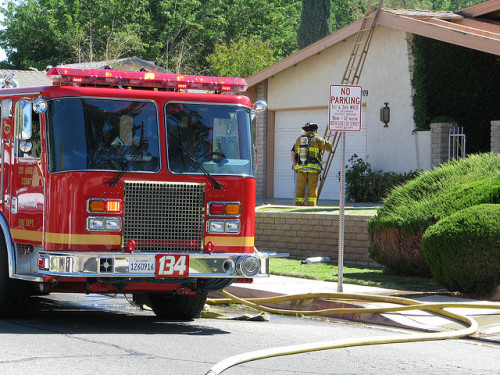

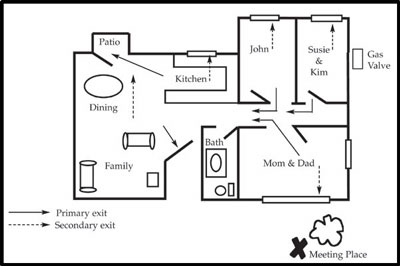 source
source
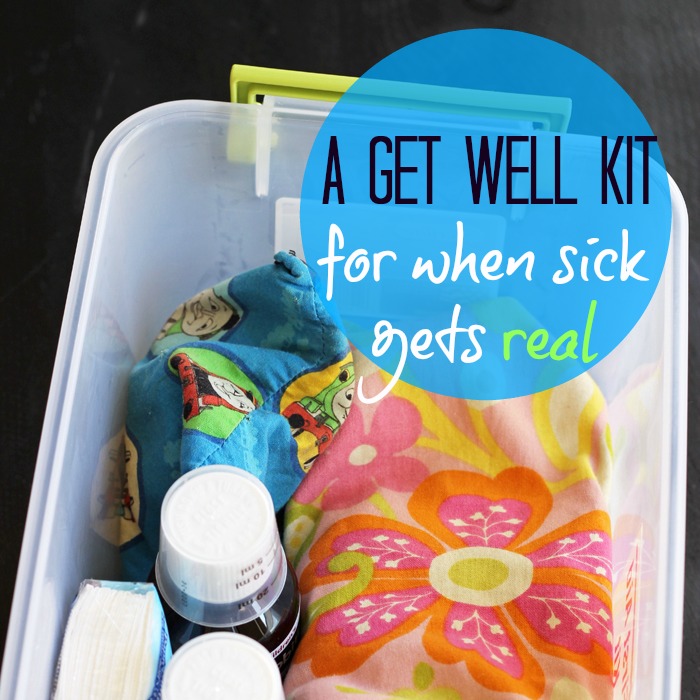

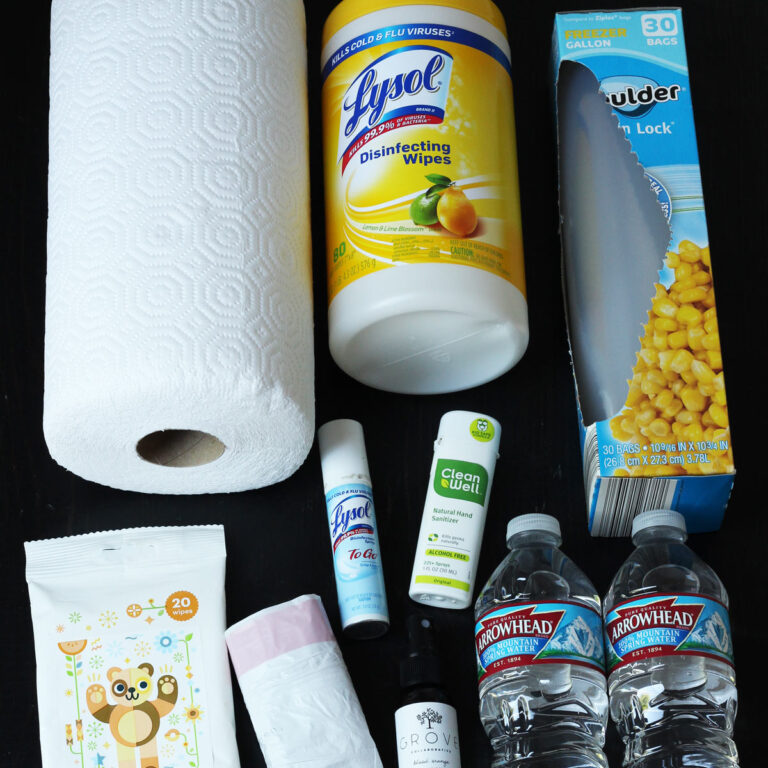
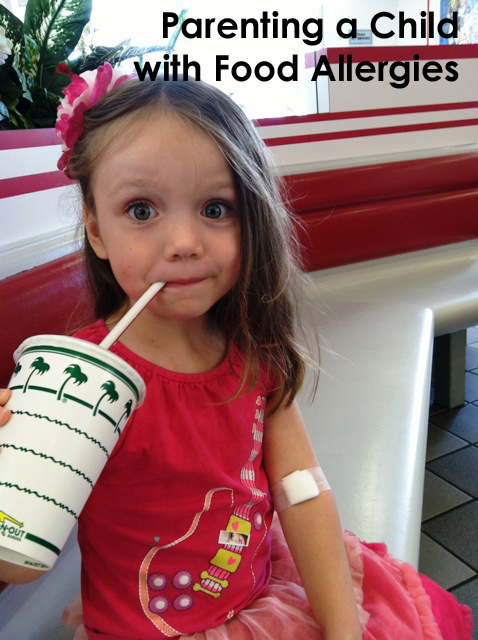
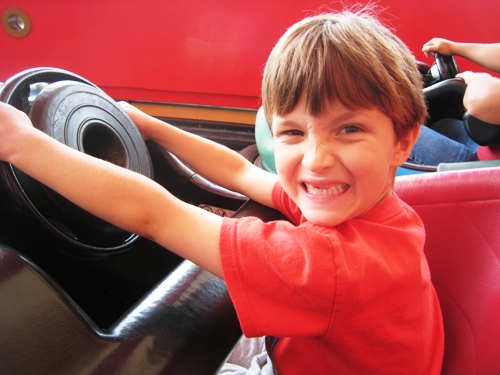
I would like to have more food and water stored up for an emergency.
I want to purchase more fire extinguishers and start and emergency first aid equipment
We need more emergency water since we only have well water.
We need to get a safety ladder for the second story of our house.
I need some “go to” emergency cash for gas, etc. in case we need to evac. due to hurricane.
have our 72 hour kits prepared in case we need to get up and go
Great tips! We have emergency backpacks but I need to go through them again and redo them. Great giveaway, thanks!
Start an emergency backpack for once. It’s sad how low this is on my to-do list.
I need to stock the pantry again for food that can be eaten without cooking since Hurricane season is coming up.
I need to start an emergency pack! I don’t even have one to add the prize to yet!
We need to have one designated place for our emergency supplies/water/food.
I would like to be better prepared with more food.
We do the stockpile, too, and we recently started buying our own grain.
I follow them on Twitter @couponlover16.
I follow their blog via Google Friend Connect.
I “like” Emergency Essentials on Facebook.
I want to start creating a specific emergency stockpile, especially of water – you can’t get more essential than that!
I like emergency essentials on facebook
I follow the preparedness pantry blog
I have a goal to become more prepared for cooking without electricity.
I’d like to put a rope ladder in my kids window.
Just having a plan would be a good start, wouldn’t it?
Follow them on twitter. @randi094
I want a first aid kit to be prepared.
I would like to prepare an Emergency Case that has food, supplies, and our important papers all together. Also a sure way to get our of the house in case of fire.
We need an escape plan. And our 72 hour kits updated. And some water storage. Right now, the main thing we can say is the kids know what the tornado sirens sound like and what to do for that.
I need to stock up on water and some essential food items. I’m pretty under-prepared right now!
We need to get an emergency kit together, but I think it is more important that we practice fire drills with our kids. We have talked about what to do, but never actually tested them out.
I “liked” Emergency Essentials on Facebook.
I need more water. I’m pretty well prepared with current and long-term food storage, but am seriously lacking in the water department.
extra food and water in case of emergency. making sure we all know the best way out in case of a fire.
We need to practice fire drills more often. Also, our electric goes out pretty often, so we need to purchase a generator.
We were just talking about emergency preparedness last week (fires in the home) especially after I had a fire in the oven. I need a better plan for the 4 year old….I haven’t talked to her about fires at all. My older kids have a plan and know what to do.
Family escape route and plans for a fire. And it would be good to get all my emergency kit supplies in one place, too.
I am also now following the preparedness pantry blog!! Woohoo!
To be better prepared i need to actually put all my supplies in one place. I know I have everything but it is not in a “kit”.
I have a lot of “stuff” set aside for emergency kits. But nothing is organized or put together, so it really wouldn’t be beneficial when an emergency strikes. It’s easy to put things off but with so many disasters taking place – it’s time for me to buckle down and get things organized!
We need to make a family escape route plan (well, other than the one in my head)…and prepping an emergency kit would be a good idea, too.
We are refinancing (tonight) and plan on taking the savings to stock up on emergency preparedness stuff (bulk foods from EE, water purification stuff, a hand pump for our well, etc.)
I like EE on facebook.
Time to replace the batteries in our flashlights. I am going to increase our emergency water supply.
We’ve started our emergency preparedness already, but it would be nice to have an emergency radio and better flashlights.
i need to get our 72-hour packs together!
Water. I need to figure out a better way to have some on hand just in case!
I like them on Facebook.
I need to stock up on water and canned foods and talk to my kids.
I need to think through what special things for my infant and toddler that I need to have in case of emergency – not just food/clothing but other things that would be of help and comfort to them should an emergency strike.
The one thing I still need to do is organize it all!! I want to take some road things out of our emergency rubbermade bins to out in our new minivan. The stow and go seats provide a huge in floor storage spot. I have some water and non-perishable food bars and hand warmers, but I want to add first aid, those silver heat reflecting “blankets”, hats, and whatnot in case we are ever in the car already when the emergency strikes.
I need to plan an emergency escape route from the house in case of fire and teach it to my kids.
I want to purchase water to keep on hand in the event that our supply is tainted
I want to create an evacuation plan for my family in case of an emergency. We live near a nuclear power plant.
I buy from this web site so I am familuar with a lot of their products. I have never tried the ice cream sandwiches…I have been storing extra food for a few years and try to rotate. I do need to stock up on water as that is something I have not been buying much of.
I “like” this site on facebook…
I need to update our emergency bag. I looked in it recently and it had preschool coloring books, diapers, and busted snacks. My kids are 9 and 11!
Always working on building our food supply.
I need to update the contact list I made some time ago to use in case of an emergency.
We’re preparing bug out bags so that our emergency preparedness supplies can be portable. Food, first-aid, water purification, shelter, etc…are all in backpacks and ready to go if we can’t stay in our home during a major disaster.
I need to round everything up in one place. I keep thinking, Oh, I know where it all is. A few months ago the power went out in a wind storm and we were in a panic… couldn’t even find flashlights.
We need to buy a fire extinguisher for our kitchen.
I now follow beprepared_com on Twitter. @longwait4bella
I need to have a kit made for our family.
We have our meeting place if there is ever an emergency, but we need to talk more about how to get there if there is an emergency. I think I’ll check out the sites you recommend and create a plan before dinner tonight!
Thank you for offering this give-away. Emergency preparedness is so important, and I hope everyone has a plan.
to get a first aid kit for the house we have one for our cars but never got one for in the house.
I follow Emergency Essentials on Twitter; @CarrieDust
[email protected]
I follow Emergency Essentials on GFC; CarrieDust
[email protected]
I follow Emergency Essentials on FB; Carrie Phelps
[email protected]
This past Fall I experienced my first Earth shaking earthquake here in New Hampshire & researched to find they are quite common in this area. I’d like to be prepared!
[email protected]
I would like my husband and I to have a plan for if something happens and my husband is at work, a plan for meeting back up, letting eachother know we are okay.
And I subscribe to preparedness pantry via rss feed
We are moving next week, and once we are in our new home my top priorities are to restock the pantry and water supplies, finally put together a robust first aid kit, and figure out exactly what I need when one of those mountains I see is actually a volcano.
We live in tornado land. So…we keep pillows and blankets ready to go right next to our “safe place”. If it looks like the storms are coming in early in the day, I will gather some books, activity books and handheld games for our lockdown stay. Bicycle helmets are a must!
Our family needs to come up with a plan in case of a fire, I think we’re set on everything else but that. It’s been in the back of my mind for a while now, we have a 4 year old and a 2 year old and I think they may be getting old enough to learn this now.
I liked Emergency Essentials on FB
I really need to come up with an emergency plan.
I would like to be better prepared with keeping important documents safe. We recently received a fireproof safe from my MIL but have yet to put documents in it or secure it in a good location in our house.
We talk about what to do in an emergency with our kids all the time.
I follow the PP blog also.
I need to get a water filtration system and more emergency medical supplies.
To be better prepared I’d like to buy some more sprout seeds to add to my pantry.
I feel like the coupon stockpiling I do would take care of the food aspects of “shelter in place”, but I need some sort of plan to store or purify water. I tried storing plastic jugs of water, but one leaked and made a big mess.
I’d like to have a better food storage.
My littles are, well, little (2 and 3), so I haven’t talked talked to them about fire escape plans, etc. We do talk about things like looking both ways before we step into a parking lot, etc., but I’d like to do more.
Great Advice, we have a better than average food storage but we need to add more.
Our family really needs to get our 72-hour kits up-to-date. We’re so behind on them and need to have things ready for ourselves and our kids in case of emergency!
We need to sit down with our young children and make an emergency plan.
I need to get more water.
I love the tip about toiletries and clothes in a suitcase. I’m going to do that today!
I just bought filter water bottles to augment our 72-hour kits. I really need to figure out the food situation, though.
Twitter follower.
Facebook follower.
I follow the PP blog.
I need to make an emergency car kit.
I make sure that we have a couple of 5 gallon bottles of water in the ouse.
My family has a “just in case” bag that holds extra clothes, food, water, and supplies that stays in my car! But we do need to work out a better strategy for emergencies inside the home. (fire)
=)
I liked Emergency Essentials on Facebook!
I definitely need to store more water. I’m still trying to figure out where though!
I need to store more water for our family.
I need to make copies of important paperwork to have in a separate location.
We talk to our children about the Plan for fire, etc…
I need to talk to the kids about fire safety and how to escape our home in the event of a fire.
I would like to get my pet emergency items together, including paperwork, to add to my kit.
I want to have a meeting place in case of an emergency.
As a licensed foster home, we are required to have an emergency escape plan posted, and to have regular emergency drills in our home. Thanks for making the importance of those so clear! Now we need to work on the emergency stockpile!
And I like ’em on Facebook!
Okay, I follow emergency essentials.
I need more bottled water and a wheat grinder.
I need to put a smoke alarm by my bedroom door. I am a heavy sleeper and our main alarm is in the kitchen. We live in a mobile home which burns easy anyway so a smoke alarm closer to my bedroom would be a definite benefit to me.
When I was little, my dad drilled us on a meeting place outside our home in case of a fire. I’d like to bring that back with my family, just in case.
We need to designate an area or box to keep all of our emergency supplies together.
water for us too!
Buy good quality flashlights and make sure they always have fresh batteries, and are stored where everyone can find them.
One thing I want to do is have all of our fire alarms working!
I want to have an evacuation plan incase something happens
We’re Southern Californians here as well, and the recent earthquake in Japan once again brought my husband and I to reevaluate our emergency supplies. We realized that since moving and a car trip that not only was our 24 hour car kit out of water, but we had no bottled water stored in the house either! We’ve started to fix that as that is a major preparedness issue.
I liked them on FB! 🙂
One thing I’d like to do is get all of our smoke detectors in working order and get a few more.
We have all of our important papers in one secure location. I should keep more gallon jugs of water on hand.
To be BETTER prepared we try to be tidy… may sound crazy but if there was a fire and stuff all over the place I know I wouldn’t be able to find my way out. We were recently pretty upset because our vehicles were broken into and they stole lots of stuff…including my husbands wallet. The good thing was I had made a list of everything in our wallets so it made it that much easier for us
Water! I’m doing pretty good in the food area but water – that’s the tough one for me.
Well, I have 72 our kits that need to be rotated, we just did an emergency drill with our kiddos, but I still need to figure out how to turn off the water and gas to our house. We’ve only lived here for 4+ years… I’d love to have freeze dried ice cream bars for the 72 hour kits though! Thanks!!
Water, definitely water. We don’t have any water stocked and it’s something that we certainly take for granted.
I need to go over the evacuation plan again with my kids. We have a tri-level and they need to learn to go out their windows and walk the fence line to get out safely. It is going to take some more encouraging to get them to understand that that is a the best plan.
I need to get smoke detectors. We have none in our house
We need more food and water! Also, I need to have a bag prepared for our 15 month old in case we have to leave the house in a hurry. Eeek, I’m not prepared at all! I need to get on it!
We have small bags packed with essential prescription medication that we rotate out regularly, but we, too, need to set up an emergency pantry with water and foodstuffs.
i like them on facebook
We need to make a evacuation plan for sure
Check our fire exhauster as they are pretty old and I haven’t looked at the expiration date…
We don’t have an emergency plan at all so that’s our first step.
ps… I called a friend who just moved here last week and told her don’t worry the sirens go off EVERY Tues at noon! 😉 We were blessed to be able to help with clean up after the Chapman tornado and reinforced our prep ….
There’s also a ReadyArmy site for those us in the military; although truthfully we have no excuse for not being prepared. I would also add make sure you have stuff for kiddos to do if you wind up in a shelter — legos, a book to read (hey if you really want to be techie an extra kindle? but we dont’ have that much $ 🙂 ) , toy cars, a favorite blankie/stuffed animal. We have step out bags for each family member (backpacks, one with wheels for leastun) rather than one huge heavy tub….
I need to get something for warmth, sleeping bags and blankets.
Great tips Jessica! I love that freeze dried ice cream is considered an emergency item! And I guess it is with kids huh? 🙂
We keep a bag packed of essentials — changes of clothing, medication, etc.
A few years ago I packed a bag in the basement with a change of clothes and shoes for all of us and diapers for my then 2 year old son. Since it’s been awhile and we now have another child I should update that, you think?
And I used to live in Kansas City. Ah, the sirens!
I am canning more foods instead of freezing them. We have lots of food, but if the power goes out, we will lose most of it.
A couple things I want to add to my preparedness – an evacuation bag and at some point a generator.
We already have a generator and have begun buying large bags of food to store. I’m going to take a gardening class this Spring/Summer and am hoping to learn to can and preserve some of the bounty I’ll be gardening.
I actually think we’re pretty prepared with 72-hr kits and food storage. My kids obviously know the plan for a fire…some grease at the bottom of my oven set off the smoke alarm the other day and my 7 and 4yo sons ran outside to the fire hydrant and wouldn’t come back in to help me fan the smoke!
I want to get the irreplacable things (family pictures, videos, etc.) better organized so that they could be grabbed quickly if we needed to evacuate for any reason. Also want to increase our supply of bottled water.
I live in Wilmington, NC where hurricanes/tropical storms are a natural part of our Summers. One thing I’ve not done since my daughter was born was really have a plan in place. We’ve moved to a new home, and although she’s not young enough to understand the importance of a plan – I feel strongly now that I must think of our reaction to hurricane/storm emergencies from all perspectives – as a Mom, as a wife, and as a partner.
Find a good place to store our emergency supplies. Garage? Basement? There are pros & cons for eacch depending on the type of emergency we could have here.
I definitely want to start going over emergency plans with my children, and start stocking up on supplies for “just in case”.
Stock up on water and finish getting our emergency supplies in one place.
I want to make an emergency evacuation plan. I also need to put new batteries in my smoke alarms!!
Because we live in Florida and our biggest natural disaster threat are hurricanes, we always have 3+ weeks of food and water + supplies for no electicity for our family.
I need to stock up on everything.Due to unexpected bills we have used a lot of our stockpile.We have a well and I have a bucket and rope so we can get water from that if we need it.
I need to stock up on water and start talking to my kids.
Practice with my kids how to evacuate the house in case of a fire!
Since 9/11, I have had a small rolling suitcase packed with a change of clothes,toiletries, etc., for all of us. (I’ve had to update it every year, as the kids grow!) I even have a roll of toilet paper!
My husband and I just purchased a generator ($350 at Aldi store) to run our well pump and freezer in case of power outage. We just moved out in the country and our area has freezing rain/snow in winter and powerful storms the rest of the year that could take down power lines.
I need to gather copies of important financial/personal papers that we might need if we left quickly.
water storage and food that doesn’t electricity to prepare (in case power is out for an extended time)
I would prefer having more Water in order to be better prepared.
Liked Emergency Essentials on Facebook
One thing I want to do to be better prepared is to keep fresh bottled water in storage, I suppose by the gallon? It seems like that is always a big issue in emergencies.
I follow the Preparedness Pantry
Megan makes a good point – my DD can walk, I need to start teaching her what to do.
I need to work with my kids to help them understand what to do in an emergency. They’re little, but I don’t want them to be panicked in an emergency because they are unprepared.
Water. More Water. It’s one of the most important preparedness items but it is most lacking in my storage plans.
I’m putting extra water in our vehicle as well as our home to be more prepared in case of an emergency.
I want to purchase the drop down ladders, I have five rooms up to high to jump from to escape a fire
I need more food. my husband is building me some shelves in the garage and I am trying to put more away. With layoffs in his company we are also trying to put away cash for our house payment, because I have a lot of food already but couldn’t pay our house payment for very long.
I need to start talking to my kids about what to do in case of a fire in our house. They’re very little (3 & 1) so I never really thought about it but if they can walk, they can learn to walk out side in an emergency.